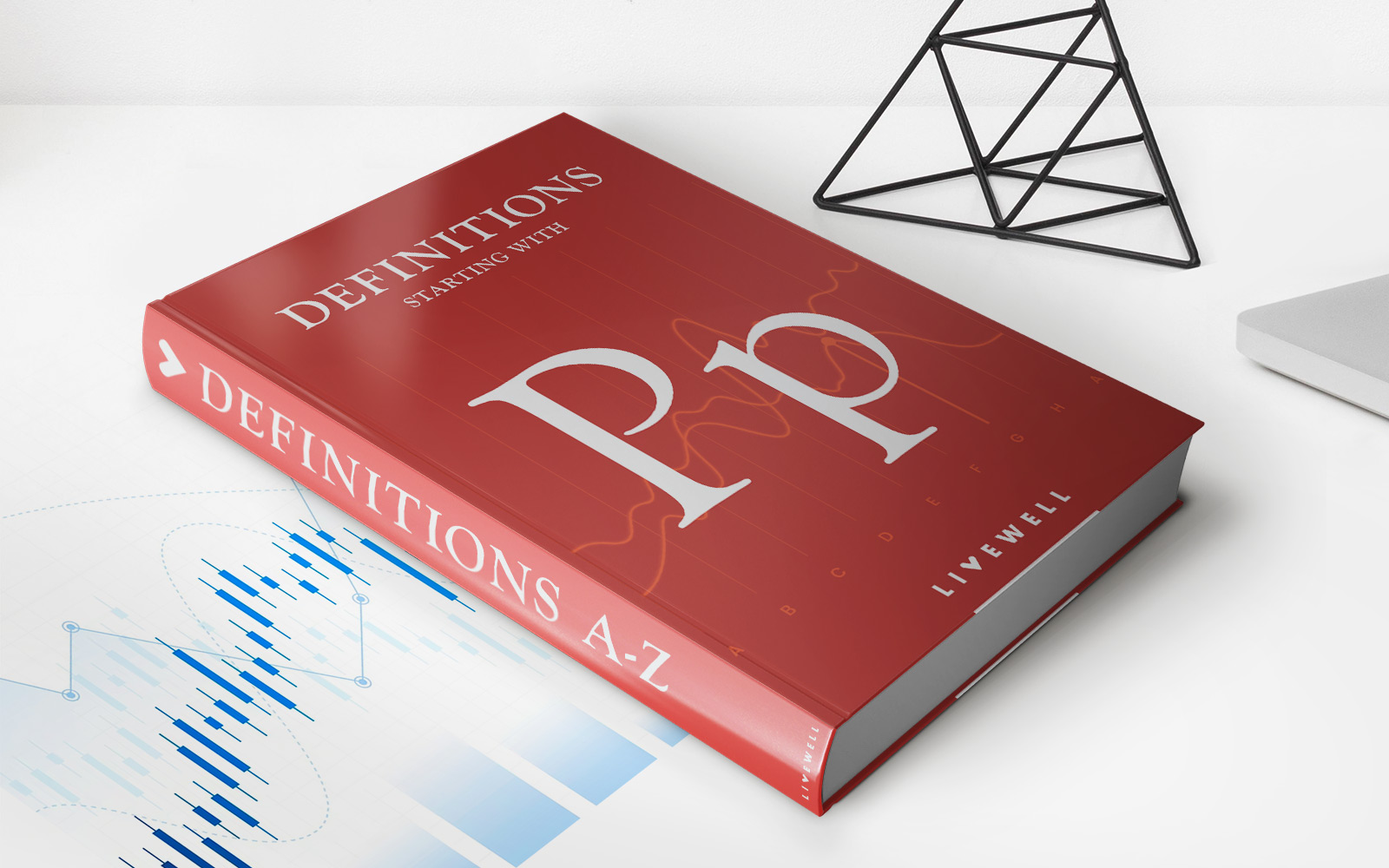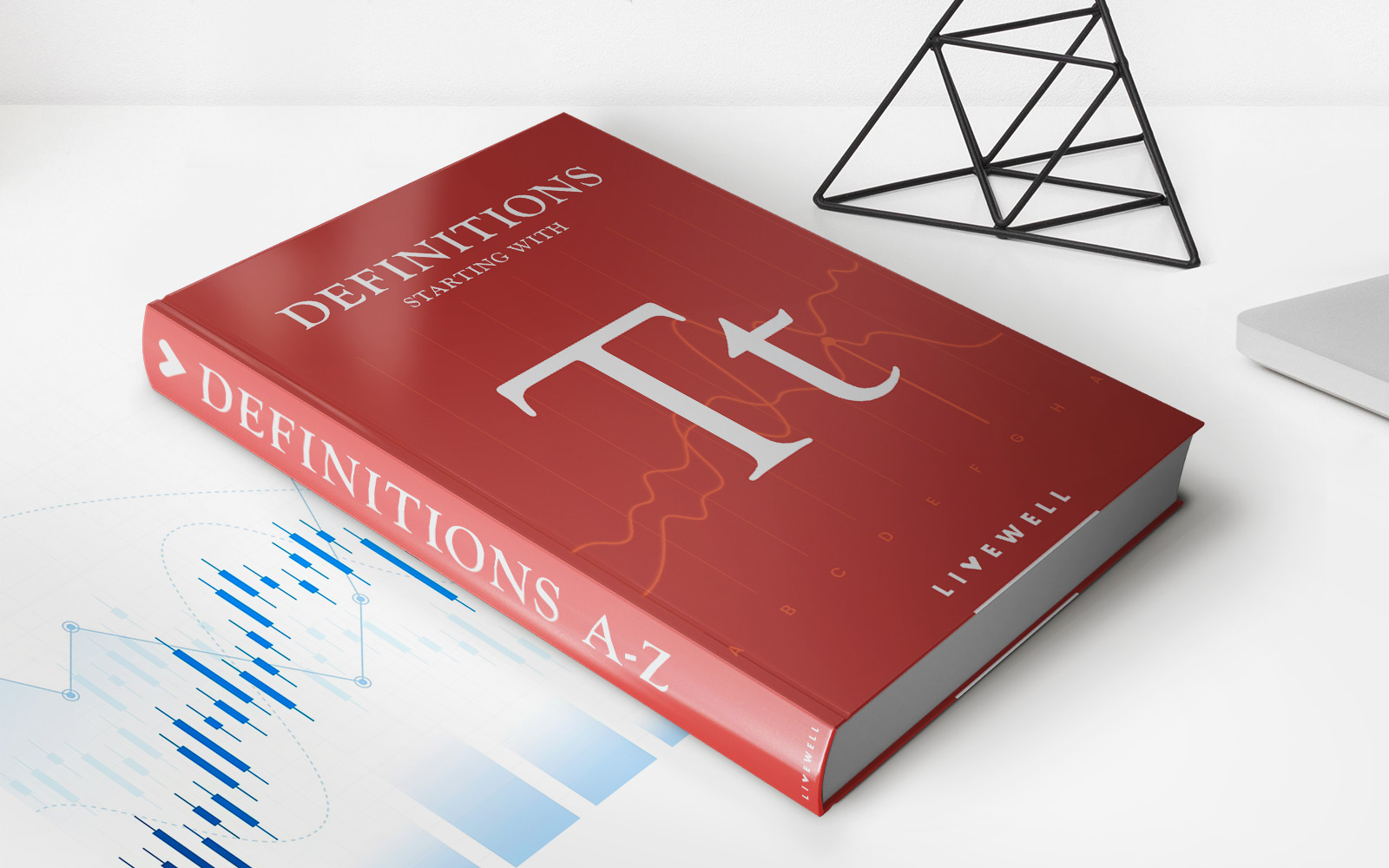

Finance
How Do Insurance Adjusters Get Paid?
Published: November 16, 2023
Learn how insurance adjusters get paid and understand the financial aspects of this profession. Find out more about the compensation system and payment methods used in the insurance industry.
(Many of the links in this article redirect to a specific reviewed product. Your purchase of these products through affiliate links helps to generate commission for LiveWell, at no extra cost. Learn more)
Table of Contents
Introduction
Insurance adjusters play a crucial role in the insurance industry. They are responsible for assessing and determining the extent of damage or loss covered by an insurance policy, and then deciding the appropriate settlement amount. They are essentially the middlemen between the policyholder and the insurance company.
One common question that arises is how insurance adjusters get paid for their services. The answer to this question can vary depending on the type of adjuster and the specific compensation model they operate under. In general, there are three main types of payment structures for insurance adjusters: salary-based, commission-based, and fee-based.
It is important to note that not all insurance adjusters are directly employed by insurance companies. Some may work as independent adjusters, while others may be employed by third-party claims adjustment firms. The payment structure can also differ depending on the type of insurance claims being handled, such as property and casualty claims, auto claims, or workers’ compensation claims.
In the following sections, we will take a closer look at each payment structure and explore the factors that can influence an adjuster’s pay. Understanding how insurance adjusters get paid can provide valuable insight into the motivations and potential conflicts of interest that may arise in the claims handling process.
Salary-based Adjusters
Salary-based adjusters are those who receive a fixed salary from their employer, whether it is an insurance company or a claims adjustment firm. These adjusters are typically full-time employees who are dedicated to handling insurance claims on behalf of their employer. They may specialize in specific types of claims or have a broader scope of responsibilities.
One of the advantages of being a salary-based adjuster is the stability of a consistent income. Regardless of how many claims they handle or the outcome of those claims, they can rely on their salary as a steady source of income. This can provide a sense of financial security and peace of mind, especially during periods of low claim volumes.
Salary-based adjusters may also have access to additional benefits such as healthcare, retirement plans, and vacation days. These benefits can enhance the overall compensation package and make it more attractive to those in the insurance industry.
However, one potential downside of being a salary-based adjuster is the lack of direct financial incentives. Unlike commission-based adjusters who earn a percentage of the settlement amount, salary-based adjusters do not have a direct stake in the outcome of the claims they handle. This can sometimes result in a lack of motivation or a reduced sense of urgency in resolving claims.
It is worth noting that some insurance companies may offer performance-based bonuses or incentives to salary-based adjusters. These can be tied to metrics such as claim closure rates, customer satisfaction scores, or meeting specific targets. This can help to align the interests of the adjuster with the company’s goals and provide additional financial motivation.
In addition to their salary, salary-based adjusters may also be eligible for promotions and career advancement within their organization. This can include opportunities to specialize in a certain area of claims handling, take on management roles, or move into other areas of the insurance industry.
Overall, salary-based adjusters provide stability and a consistent income for those working in the insurance claims industry. While they may not have the same direct financial incentives as commission-based adjusters, they can still have access to benefits and potential bonuses based on their performance.
Commission-based Adjusters
Commission-based adjusters are compensated based on a percentage of the settlement amount they negotiate and secure for the claimant. Unlike salary-based adjusters who receive a fixed income, commission-based adjusters’ earnings are directly tied to their performance in settling claims.
This payment structure provides a strong financial incentive for commission-based adjusters to maximize the settlement amount. The more they are able to negotiate on behalf of the claimant, the higher their commission will be. This incentivizes them to thoroughly investigate the claim, accurately assess the damages, and negotiate skillfully with the insurance company for a fair settlement.
Commission-based adjusters often work as independent contractors or for third-party claims adjustment firms. They may handle a wide range of claims, including property and casualty claims, auto claims, and other types of insurance-related disputes.
One of the advantages of working as a commission-based adjuster is the potential for higher earnings. Successful adjusters who excel at their job and consistently secure favorable settlements can see their income increase significantly. This can be particularly attractive for those who thrive in a performance-driven environment.
However, commission-based adjusters also face certain challenges. The most significant of these is the uncertainty of income. Since their earnings depend on successfully settling claims, there may be periods where claim volumes are low or disputes take longer to resolve. This can result in fluctuations and inconsistencies in their income.
Commission-based adjusters are also responsible for covering their own expenses, such as travel costs, office supplies, and insurance licensing fees. These expenses can diminish their overall earnings and require careful financial management.
Despite the challenges, commission-based adjusters have the opportunity to earn a substantial income in the insurance industry. Their financial success is directly tied to their skills, expertise, and ability to effectively negotiate on behalf of claimants.
It is worth noting that regulatory agencies in some jurisdictions impose caps or limitations on the amount of commission-based compensation that adjusters can receive. This is to prevent potential conflicts of interest or excessive fees charged to policyholders.
Overall, commission-based adjusters have the potential to earn higher incomes based on their performance and negotiation skills. While they may face income fluctuations and need to cover their own expenses, their financial success is directly tied to their ability to secure favorable settlements for claimants.
Fee-based Adjusters
Fee-based adjusters, also known as public adjusters, operate under a different compensation model compared to salary-based or commission-based adjusters. Instead of earning a salary or a commission based on settlement amounts, fee-based adjusters charge a predetermined fee for their services.
Public adjusters are usually hired by policyholders to represent their interests and negotiate with the insurance company on their behalf. They work independently or as part of public adjusting firms, and their primary responsibility is to ensure that the policyholder receives a fair and just settlement for their claim.
When a policyholder hires a fee-based adjuster, they typically enter into a contractual agreement that outlines the terms and conditions of the engagement. This includes the specific services the adjuster will provide, the scope of their representation, and the fee structure.
The fee charged by fee-based adjusters is often calculated as a percentage of the total claim amount. This percentage can vary depending on several factors, such as the complexity of the claim, the size of the loss, and the experience and reputation of the adjuster.
Unlike commission-based adjusters who negotiate on behalf of claimants, fee-based adjusters work exclusively for policyholders. Their role is to advocate for the policyholder’s best interests, ensuring that they receive a fair and adequate settlement from the insurance company.
One advantage of hiring a fee-based adjuster is the expertise and knowledge they bring to the claims process. They have a deep understanding of insurance policies and claim procedures, and they can effectively navigate the complexities of the insurance system. This can help policyholders receive a more favorable outcome and maximize their claim settlement.
However, it is important to consider the cost implications of hiring a fee-based adjuster. The fees charged by these adjusters can be substantial, often ranging from 5% to 15% of the total claim amount. Policyholders should carefully weigh the potential benefits against the additional expense before deciding to hire a fee-based adjuster.
It is worth noting that fee-based adjusters are regulated in many jurisdictions to ensure fair practices and protect policyholders. Licensing requirements and fee limits may be imposed to prevent excessive fees or unethical behavior.
In summary, fee-based adjusters operate under a different compensation model compared to salary-based and commission-based adjusters. They charge a predetermined fee, usually a percentage of the claim amount, and work independently to represent the policyholder’s interests. While hiring a fee-based adjuster can provide expertise and representation, it is important for policyholders to consider the cost implications before making a decision.
Hybrid Compensation Models
In addition to the salary-based, commission-based, and fee-based compensation structures, there are also hybrid compensation models that combine elements of these different approaches. These hybrid models seek to strike a balance between providing stability for adjusters while also offering incentives for exceptional performance.
One example of a hybrid compensation model is a base salary combined with a performance-based bonus. Under this model, adjusters receive a fixed salary as their base pay, ensuring a consistent income. However, they also have the opportunity to earn additional bonuses based on their performance metrics, such as claim closure rates, customer satisfaction scores, or meeting certain targets.
This type of compensation model provides adjusters with the security of a regular income while also motivating them to perform at their best. It encourages them to efficiently process claims, provide excellent customer service, and strive for positive outcomes in order to earn those performance-based bonuses.
Another hybrid compensation model is a base salary with a smaller commission or fee component. In this model, adjusters receive a fixed salary as their primary income source, providing stability and a reliable paycheck. However, they also earn a smaller commission or fee for each settled claim, giving them some additional financial incentive based on the success of their work.
This type of hybrid model aims to balance the benefits of a steady income with the motivation of earning additional compensation. It acknowledges and rewards adjusters for their efforts in settling claims effectively, while still providing financial stability to support their daily lives.
Hybrid compensation models can vary depending on the insurance company or claims adjustment firm. They may have different weightings and structures that determine the proportion of base salary, commission, or bonuses. These models are designed to align the interests of adjusters with the organizational goals, ensuring both the adjusters and the company benefit from successful claims handling.
The specific details of hybrid compensation models can also vary based on the type of claims being handled. For example, property and casualty adjusters may have different compensation structures compared to auto or workers’ compensation adjusters.
Ultimately, hybrid compensation models aim to strike a balance between providing financial stability for adjusters and motivating them to excel in their work. They combine elements of fixed income with incentives to reward high performance, ensuring that adjusters are motivated to handle claims efficiently and effectively.
Factors Affecting Adjusters’ Pay
Several factors can influence adjusters’ pay, regardless of the compensation model they operate under. These factors can impact the earning potential of adjusters and vary based on industry trends, experience, and job performance.
1. Experience and Expertise: Adjusters with more experience and specialized expertise are often able to command higher salaries or earn higher commissions. As they gain knowledge and skills in handling complex claims, their value to the insurance company or clients they represent increases.
2. Type of Claims Handled: Different types of claims require varying levels of expertise and may have different compensation structures. Adjusters who specialize in high-value property and casualty claims or complex auto claims may have higher earning potential compared to those handling smaller, straightforward claims.
3. Location: Geographic location can significantly impact an adjuster’s pay. Adjusters working in regions with higher costs of living or where insurance claims activity is particularly high may earn higher salaries or have more lucrative opportunities for commissions or fees.
4. Volume of Claims: The number of claims an adjuster handles can also affect their pay. Adjusters who handle a larger volume of claims may earn more income, as they have the opportunity to negotiate and settle more cases. However, managing a high volume of claims can also be demanding and may require more efficient processes and time management skills.
5. Company or Firm Size: The size of the insurance company or claims adjustment firm can influence an adjuster’s pay. Larger companies may offer higher salaries or more lucrative commission structures due to their resources and the volume of claims they handle. Smaller firms, on the other hand, may offer more flexibility or opportunities for career advancement.
6. Performance Metrics: Some insurance companies or claims firms have performance metrics in place that can impact an adjuster’s pay. These metrics can include claim closure rates, customer satisfaction ratings, or achieving specific targets. Adjusters who consistently meet or exceed these metrics may earn higher bonuses or incentives.
7. Negotiation Skills: Strong negotiation skills are essential for adjusters, as they directly impact their ability to secure higher settlements. Adjusters who excel in negotiating with insurance companies and obtaining favorable outcomes for their clients may be rewarded with higher commissions or bonuses as a result.
8. Market Demand: The demand for adjusters in the market can also influence their pay. If there is a shortage of adjusters with specific expertise or in high-demand areas, employers may offer higher salaries or more attractive compensation packages to attract and retain talent.
It is important to note that the specific factors and their relative importance can vary depending on the specific adjuster’s role, industry, and market conditions. Adjusters who understand these factors and actively work to enhance their skills and performance can increase their earning potential over time.
Conclusion
Understanding how insurance adjusters get paid is essential for both policyholders and professionals in the insurance industry. The compensation models for adjusters can vary significantly, including salary-based, commission-based, fee-based, and hybrid structures. Each of these models has its own advantages and considerations.
Salary-based adjusters benefit from the stability of a consistent income, along with potential bonuses and benefits from their employer. Commission-based adjusters have the potential for higher earnings based on their negotiation skills and performance in securing favorable settlements. Fee-based adjusters charge a predetermined fee for their services and work independently to represent policyholders’ interests.
Hybrid compensation models strike a balance between stability and incentives, combining elements of base salaries, commissions, or performance-based bonuses. These models provide adjusters with a reliable income while motivating them to excel in their work.
Factors that can affect adjusters’ pay include their experience, expertise, the type of claims they handle, location, volume of claims, the size of the company or firm they work for, and their negotiation skills. These factors can vary in importance depending on the adjuster’s role and market conditions.
Ultimately, the compensation structure of insurance adjusters is designed to align their interests with the goals of their employers or policyholders. It is important for adjusters to continuously develop their skills, stay abreast of industry trends, and find ways to maximize their earning potential.
For policyholders, understanding how adjusters are paid can provide insights into potential conflicts of interest and motivations in the claims handling process. It is crucial for policyholders to make informed decisions when engaging with adjusters and consider the cost implications, expertise, and reputation of the professionals they hire.
In conclusion, the payment structures for insurance adjusters can significantly impact their earnings and motivations. By understanding these structures and the factors that influence adjusters’ pay, both professionals and policyholders can navigate the claims process with transparency and make informed decisions.














